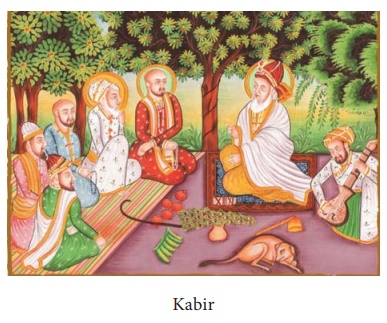The Mughal Empire - Religion | 11th History : Chapter 14 : The Mughal Empire
Chapter: 11th History : Chapter 14 : The Mughal Empire
Religion
Religion
The Mughal period witnessed a continuing assertion
of all the basic elements in puranic traditions. Though it was difficult to
speak of Hinduism as a single body of doctrine, in view of the countless faiths
and innumerable customs and practices, having developed in mutual interaction
and expressed in a large part in the same language (Sanskrit), the different
sects of Hinduism yet shared the same idiom and the same or similar deities.
The sixteenth and seventeenth centuries were the centuries of Vaishnavism.
Tulsidas (Ramcharitmanas) a great
proponent of Rama cult in his popular verses of devotion portrayed Rama as a
god incarnate. The expression of bhakti was deeply emotional as the object of
bhakti (devotion) was Krishna, an incarnation of Vishnu.
The Bhakti movement made great strides during this
period. Poets and saints emerged from various parts of the country. They were
critical of rituals, and criticised the caste system. Rather than using
Sanskrit for expressing their devotion, they employed the language of the
common people. The radical ideas, and the easy but catchy language often set to
music made them popular among the masses. Some of the major religious figures like
Vallabhacharya and his son Vitthalnath propagated a religion of grace; and
Surdas, an adherent to this sect, wrote Sur-
Saravali in the local language. Eknath
and Tukaram were Bhakti poets from Maharashtra. The Dasakuta movement, a
bhakti movement in Karnataka, popularised by Vyasaraya, turned out to be a
lower class movement.
The most important figure of the Bhakti movement
was Kabir. Said to be a weaver, Kabir propounded absolute monotheism, condemned
image worship and rituals, and the caste system. His popular poetry written in
a simple language was spread orally across large parts of north India.
An interesting aspect of the Bhakti poets was that
they came from lower castes practising craft and service

Kabir was a weaver, Ravidas, a worker
in hides, Sain, was a barber, and Dadu, a cotton carder. The Satnami sect in
Haryana credited its origin to Kabir and his teachings. While Sanskrit and
Persian were the languages of administration and intellectual activity, the
vernacular languages demonstrated their literary vitality.
Sikhism
Sikhism originated as a popular monotheistic
movement, and evolved into one of the recognised religions of the world. Guru
Granth Sahib, the holy book of Sikhs, contained the sayings of Muslim saint
Shaikh Farid and of Bhakti poets such as Namdev, Kabir, Sain and Ravidas. Guru
Nanak believed in one God who was formless and omnipresent. He condemned image
worship and religious rituals. He stressed ethical conduct, kindness to all
human beings and condemned caste system.
Sufism
India was a fertile soil for the prevalence of
Sufism or Muslim mysticism that had its origin in Iran. It was accepted by the
orthodox theologians as long as it fulfilled the obligations of the shariah. Sufism played a key role in
creating religious harmony.
Christianity
Along with the European traders came the Christian
missionaries like Roberto De Nobili, Francis Xavier. The early missionaries
were Catholics. The first Lutheran missionaries under Danish patronage arrived
in 1706 at Tranquebar and Ziegenbalg translated the New Testament of the Bible
into Tamil in 1714, and soon the Old Testament as well. This was the earliest
translation of the Bible in any Indian language.
Related Topics